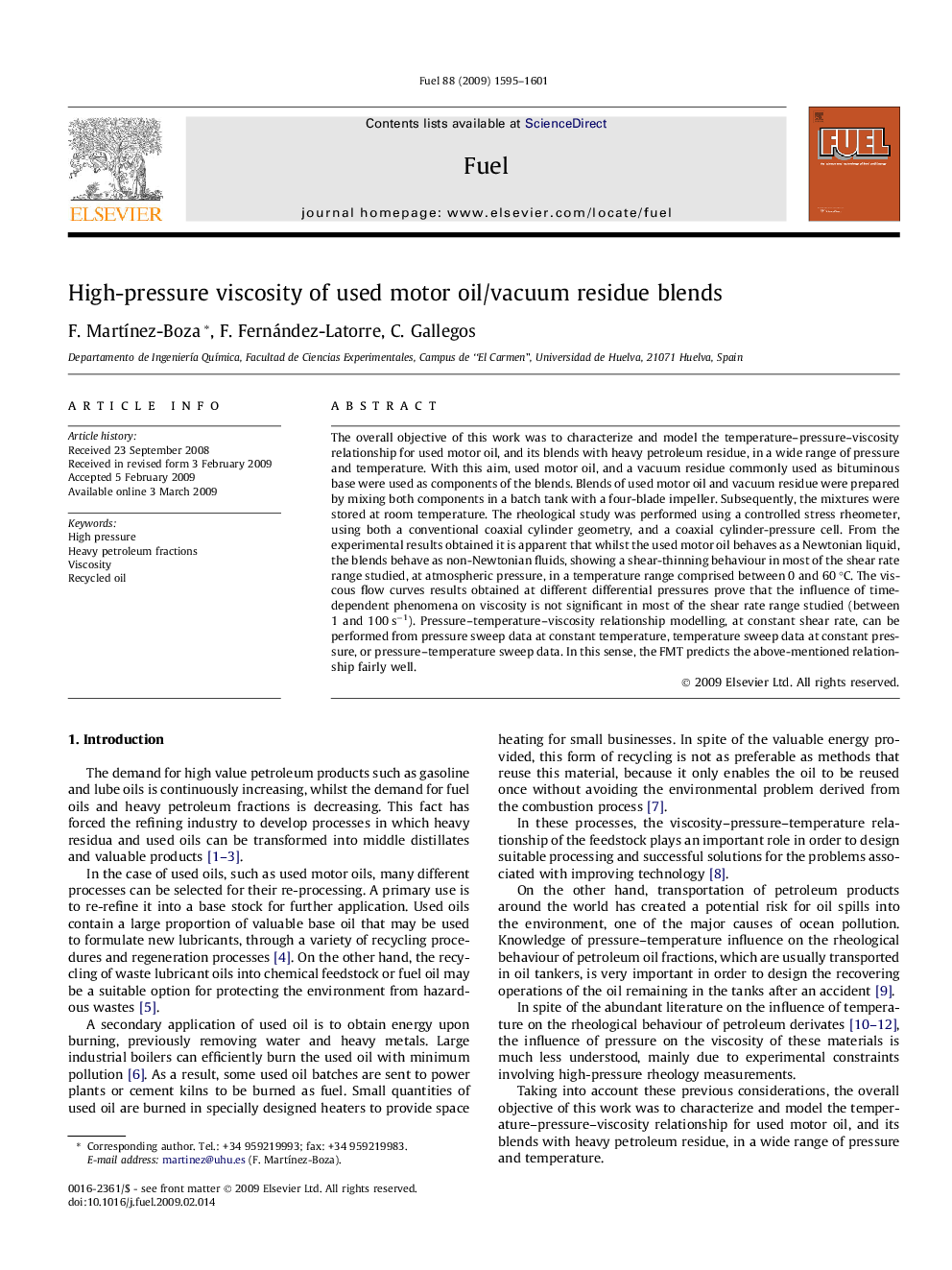| Article ID | Journal | Published Year | Pages | File Type |
|---|---|---|---|---|
| 207113 | Fuel | 2009 | 7 Pages |
The overall objective of this work was to characterize and model the temperature–pressure–viscosity relationship for used motor oil, and its blends with heavy petroleum residue, in a wide range of pressure and temperature. With this aim, used motor oil, and a vacuum residue commonly used as bituminous base were used as components of the blends. Blends of used motor oil and vacuum residue were prepared by mixing both components in a batch tank with a four-blade impeller. Subsequently, the mixtures were stored at room temperature. The rheological study was performed using a controlled stress rheometer, using both a conventional coaxial cylinder geometry, and a coaxial cylinder-pressure cell. From the experimental results obtained it is apparent that whilst the used motor oil behaves as a Newtonian liquid, the blends behave as non-Newtonian fluids, showing a shear-thinning behaviour in most of the shear rate range studied, at atmospheric pressure, in a temperature range comprised between 0 and 60 °C. The viscous flow curves results obtained at different differential pressures prove that the influence of time-dependent phenomena on viscosity is not significant in most of the shear rate range studied (between 1 and 100 s−1). Pressure–temperature–viscosity relationship modelling, at constant shear rate, can be performed from pressure sweep data at constant temperature, temperature sweep data at constant pressure, or pressure–temperature sweep data. In this sense, the FMT predicts the above-mentioned relationship fairly well.
